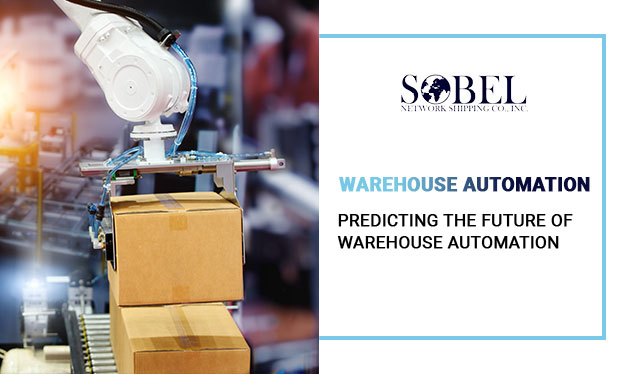Nowadays, many lead players within the materials handling industry have stepped back to take a much more comprehensive look at not only their existing but future investments. Without a doubt, the first discovery that is being made is that Artificial Intelligence (AI) is the crucial component to pushing the full power of automation. Thereby improving productivity coupled with operational throughput. The reality of maximizing productivity, even though we are in an unpredictable age, is very much a reality now.
The Future of Automation for Warehouses
As we move further into the upcoming decade, everyone will continue focusing on meeting the needs of unseasonal operational efficiency gains and overcoming the almost relentless demands being placed on the industry. Using automation solutions such as robots is going to drive productivity to impressive levels.
ABI Research currently estimates that four million robots will be in operational use in warehouses worldwide by 2025. The robotic solutions, such as the Autonomous Mobile Robots (AMRs), are impressively skilled and can carry out simple and repetitive tasks and those deemed dangerous. Functions such as transporting goods across the dock, picking and moving inbound/outbound shipments, and moving non-conveyable have been carried out by AMRs with ease which has only increased efficiency.
Effective Orchestration
It should be noted that automation alone is not always the solution to all challenges. Effective orchestration must be carried out to balance humans and robots to circumvent failure and ensure success.
Recently, I had a conversation with a manager of shipping operations who told me a familiar story. He talked about a jam that occurred on the loading dock. The jam was fixed by adding more workers. However, the next day the same solution caused problems in a similar situation and caused a late shipment as workers stood around the loading dock. Sadly, the second delay caused lower productivity because the same workers who were standing around could have been used more efficiently. Unfortunately, this is not an isolated event. In the U.S., warehouses regularly waste an estimated 6.9 weeks every year by unnecessary motion. This waste ends up costing the industry a staggering 4.3 billion or 265 million hours of labor annually, as reported by the U.S. Census Bureau.
This story clearly shows that warehouses and distribution centers must rise to the occasion to meet the changing environment. Bottlenecks lead to a ripple effect that causes delays at all facilities and in the downstream chain. Yes, warehouse managers and logistical professionals are lovely at basic problem-solving. Still, they often do not have the data needed to let them predict the future and how it will impact their overall operational efficiency. Luckily, AI does and can foresee these problems.
Cross-Platform Orchestration
AI offers a system-wide view that considers everything as a whole such as the workers’ strengths, AMRs, manual handling equipment, and all other systems. When you couple successful orchestration with problem-solving, creative abilities, and very abstract reasoning that humans do not possess, along with real-time and precise data collection, then you have a fantastic robotic solution.
In addition, orchestration looks at all automated solutions using many makers. With strategic coordination that spans many platforms, capabilities, and form factors, the orchestration clearly can see who is available to work, the tasks needed to complete the job, and assign each job to guarantee that the work is carried out efficiently. The full power of automation creates competitive advantages that help with technology and capital investments.
Synchronous Simulation
AI can propose new workflows. The AI can run simulations, find efficient ways to complete a task, provide real-time data and evaluate all available resources.
Predictive Analytics
With Orchestration engines using legacy automation, WMS, piece picking robots, and MES systems, an extensive view of all system operations starts to take shape. The insight given by AI is priceless with predictive analytics and allows a business to get ahead of the bottlenecks.
Continuous Improvement
AI collects, analyzes, and continually delivers data so that time is always correctly allocated. The robotic investments continue to learn all warehouse nuances and deliver better results over time.
Perhaps this all seems futuristic, but it’s becoming very commonplace, and it will be a necessity by 2030


